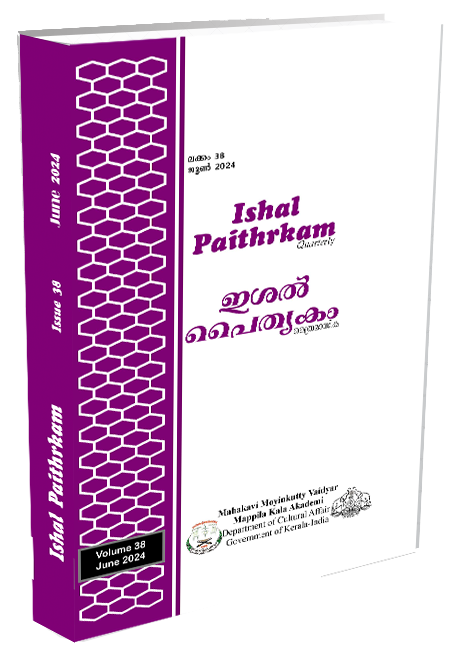Nature’s Canvas: An Exploration of Indigenous Ecological Art as a Pathway to Holistic Healing in the Context of Leslie Marmon Silko’s Novel Ceremony
Keywords:
Ecological art, indigenous, Healing, Trauma, Eco-art therapy, ceremonyAbstract
Indigenous ecological arts offer a profound pathway to holistic healing. Ecological arts or environmental arts are creative ecological modes of engagement characterized by ecological connectivity, reconstruction, and ecological ethical responsibility. The therapeutic power of these magical arts lies in their connectivity with the powers of nature. Nature serves as the profound setting for physical and spiritual healing in ecological art. An ecological orientation is achieved through the creative process of the art and it leads to holistic healing for traumatized individuals. This research article delves into the deep relationship between indigenous ecological art and holistic healing, as exemplified in Leslie Silko’s literary masterpiece, Ceremony. Through a comprehensive examination of Indigenous ecological art forms embedded within the novel, including storytelling, sand painting, and ceremonial practices, these artistic expressions’ important role in restoring the protagonist’s wellness after a traumatic war experience is unveiled. By creating a “nature’s canvas” through storytelling and artistry, Silko’s novel showcases how Indigenous cultures interweave their ecological knowledge with artistic expression, offering a holistic approach to healing that transcends individual pain and trauma.
Downloads
References
Allen, P.G. (1983) The Feminine Landscape of Leslie Marmon Silko’s Ceremony. In P. G. Allen (Ed.) Studies in American Indian Literature: Critical Essays and Course Designs. Modern Language Association, 127-133.
Arslanbek, A, Malhotra B., & Kaimal, G. (2002, February). Indigenous and Traditional Arts in Art Therapy: Value, Meaning, and Clinical Implications. The Arts in Psychotherapy, 77, 1-8. https://doi.org/10.1016/j.aip.2021.101879
Berry, W. (2000, September). Leslie Marmon Silko And Wendell Berry: Regionalisms for Ecological Work and Worship. In K. Wesley. Organization & Environment, 13(3), 338-353. https://www.jstor.org/stable/26161803
Buell, L. (1995). The Environmental Imagination: Thoreau, Nature Writing, and the Formation of American Culture. Harvard University Press.
Curtis, D.(Ed.). (2020). Using the Visual and Performing Arts to Encourage Pro-environmental Behavior. Cambridge Scholars Publishing. https://books.google.co.in/books?id=DPYBEAAAQBAJ&pg=PA64&lpg=PA64 &dq#v=onepage&q&f=false
Donkers, L. (2020). Collaborative Artistic Co-Creative Methods that Promote Eco-Social Regeneration. In D. Curtis (Ed.).Using the Visual and Performing Arts to Encourage Pro-Environmental Behavior, Cambridge Scholars Publishing, 64-75.
Ehrlich, G. (1986). The Solace of Open spaces. Penguin Books.
Monani, S., & Adamson, J. (Eds.). (2016). Ecocriticism and indigenous studies: Conversations from earth to cosmos. Routledge.
Olivier, B. (2007). Ecological art and the transformation of the world. South African Journal of Art History, 22(1), 24-34.
O’Malley, A. (2020). Nature as ally in our chronic disease epidemic. Ecopsychology, 12(3), 180-187.
Rieley, P. (1992). The mixed blood writer as interpreter and mythmaker. In J. Trimmer & T. Warnock (Eds.). Understanding Others: Cultural and Cross-Cultural Studies and the Teaching of Literature. National Council of Teachers of English, 230-242.
Silko, L. M. (1986). Ceremony. Penguin Books.
Stein, N. R. (1994). Shifting the ground: Four American women writers’ revisions of nature, gender and race. Rutgers The State University of New Jersey, School of Graduate Studies.
Additional Files
Published
Issue
Section
License
Copyright (c) 2025 ISHAL PAITHRKAM

This work is licensed under a Creative Commons Attribution-NoDerivatives 4.0 International License.

